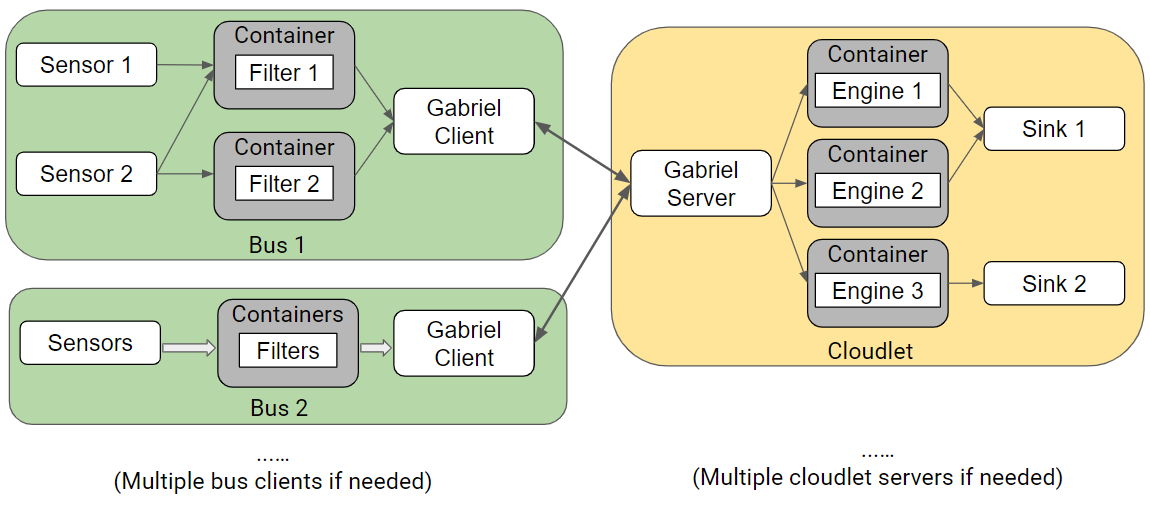The BusEdge platform is the system we build to analyze the data stream freshly-captured from the transit buses in a scalable and responsive manner. It contains four major components: Sensors and Early-Discard Filters on the bus (client) side as well as Cognitive Engines and Sinks on the cloudlet (server) side.
Sensors are the data sources on the bus, which usually include video streams from multiple cameras, GPS, accelerometer and other vehicle status read from the CANBUS. These sensor inputs will be firstly preprocessed and then published to different Early-Discard Filters for refinement.
Early-Discard Filters represent the data refinement components running on the edge computer. Different tasks could share the same filtering node or have different ones. Each filter is mutually independent and will send its outputs to the specific Cognitive Engine on the cloudlet for further analysis.
Cognitive Engines are the computer vision modules running on the cloudlet to handle and analyze the filtered messages from the bus client. The flow control between the bus client and the cloudlet server is managed by Gabriel.
Sinks represent the final components on the cloudlet to collect all the results from different Cognitive Engines and do the data analytics and visualization. This could be an OpenStreetMap server to simply show all the detection results on a map or some toolboxes for data analytics and visualization.
Modular design is one important feature of the BusEdge platform to realize scalability. The flow control of the pipeline is transparent to the developers and they only need to develop their own early-discard filter and cognitive engine. Each early-discard filter and cognitive engine could run in their own docker container both on the bus client and the cloudlet server. We isolate the functionality modules including cognitive engines and early-discard filters into different docker containers because we want to enable rapid functionality expansion and avoid dependency conflicts.
Please cite the following thesis if you find this useful.
@mastersthesis{Ye-2021-128891,
author = {Canbo Ye},
title = {BusEdge: Efficient Live Video Analytics for Transit Buses via Edge Computing},
year = {2021},
month = {July},
school = {},
address = {Pittsburgh, PA},
number = {CMU-RI-TR-21-46},
}
- All original source code and documentation are licensed under the Apache License, Version 2.0.
- Some configuration and trivial data files are licensed under CC0-1.0.
- Non-original source files were Apache-2.0, BSD-3-Clause, BSD-2-Clause, or MIT licensed and retain their original licensing.
A copy of all licenses is provided in the LICENSES/ folder, it is possible to
create a bill of materials, which licenses various files use, with a tool like
reuse.

